Have you ever stocked up your fridge with tons of healthy fruits and hearty veggies, only to watch them grow moldy and decompose just a couple days later? And during a time like right now when you're not going to the grocery store as often, going to grab a slice of bread just to uncover that it has mold on it already is not ideal. Not only is that a major waste of money, but when your fresh food supply is limited, you're going to want to make it last as long as you can.
Here, we've rounded up the best tips and tricks so you can keep all that food you've just stocked up on fresh for as long as possible.
Bread

Nope, it's not the fridge! You should keep your loaves stored on the counter, tightly wrapped and out of the light, or inside of a bread box. If your counter gets a lot of exposure to sunlight and you don't have a bread box, you can store the tightly wrapped bread in the pantry where it's dark and room temperature. If you cannot gobble up the loaf bread between three and five days, you'll want to freeze the remaining slices.
Potatoes

You'll want to place whole potatoes in a well-ventilated container, like a basket or a mesh produce bag (even a large cardboard box will do). Store in a cool, dry, dark place, like a pantry, cupboard, basement, or garage.
Avocados

If you have an avocado that's not ripe yet, the best place for it is on a counter. You'll want to keep the avocado away from other fruits and vegetables that might be on the countertop, though. Avocados produce ethylene gas, which can make other foods ripen faster.
Bananas

When they're still in the peel, bananas should be kept on the counter with the stems wrapped. If you're saving part of an opened banana, keep it in the fridge. And keep bananas away from your other produce, as they produce high amounts of ethylene gas.
Milk

The trick to keeping milk fresher for longer is mastering the placement of the milk in the refrigerator. Cow's milk should be kept between 32 degrees Fahrenheit and 39.2 degrees Fahrenheit in order to prevent spoilage, so the more the milk is exposed to warm air, the faster it will lose its freshness. The coldest parts of your refrigerator will help keep milk from spoiling longer, so keep milk in the back and bottom portions.
Coffee beans

You might not be able to take a trip to your local coffee shop right now, so you're left to brew your own cup of Joe. For best results, you'll want to store the beans in a cool, dark place like your cupboard or pantry, located away from the stove and any other heat-generating appliances. Don't think you have to put them in the fridge—coffee actually absorbs odors from the environment, so if your refrigerator is packed with aromatic foods, your coffee will begin to take on those flavors if it's not in an airtight container.
Fresh baked cookies

There's a good chance you're baking more now that you're living that quarantine life, so you want these cookies to last right? Well, your best bet is to store the homemade cookies in a sealed air-tight container with parchment between the layers and a slice of white bread in the container. Yep, a slice of bread! So why is that? The moisture from the bread will help keep the cookies soft. If you prefer crisp cookies though, you can skip the bread and leave the container slightly open so air can circulate.
Peanut Butter

Your best bet is to store that jar of peanut butter upside down, especially if it's natural peanut butter. Since natural peanut butter consists of just peanuts and sometimes a sprinkle of salt rather than a slew of added hydrogenated oils, you'll notice a thick pool of oil floating at the top. This oil separation is totally natural, but you're just going to have to do a lot of stirring when it comes time for a scoop. The solution? Popping the jar in your pantry upside down will help evenly distribute the plant oils.
Wine

If you're thinking of putting those bottles of red wine in a rack on top of the fridge, just don't. See, you can end up getting more heat on top of the fridge, which is bad for the wine. Instead, you're going to want to be sure to keep that bottle in a cool, dark place around 60 degrees Fahrenheit.
Ketchup and mustard

Although restaurants keep their condiments on tables, you're going to want to keep ketchup and mustard in your fridge at home. It's a smart move to preserve the condiments' shelf lives and keep them fresh.
Oranges and other citrus fruits

Store citrus fruits in a mesh or perforated plastic bag in the fridge.
Onions
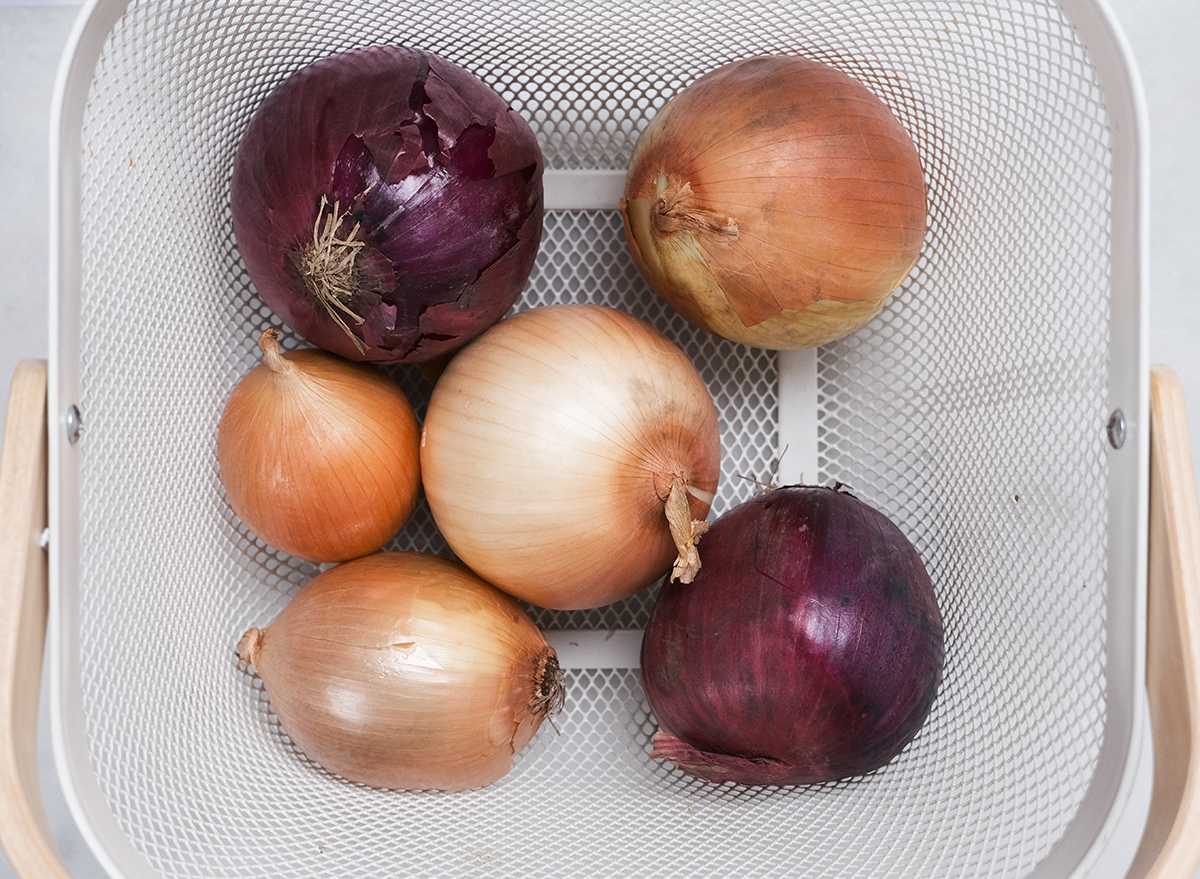
When you get back from the store, it's best to store these in a dark, cool place such as a pantry, basement, or garage. This gives the onions a shelf life of up to four weeks. It's also imperative to store the uncut onions in a mesh bag or open basket rather than a plastic bag because plastic bags don't have the proper ventilation to help the onions last longer.
Once you slice and dice up the onions though, you'll want to store cut onions in a sealed container or plastic bag in the refrigerator for 7-10 days.
Salad greens and fresh herbs
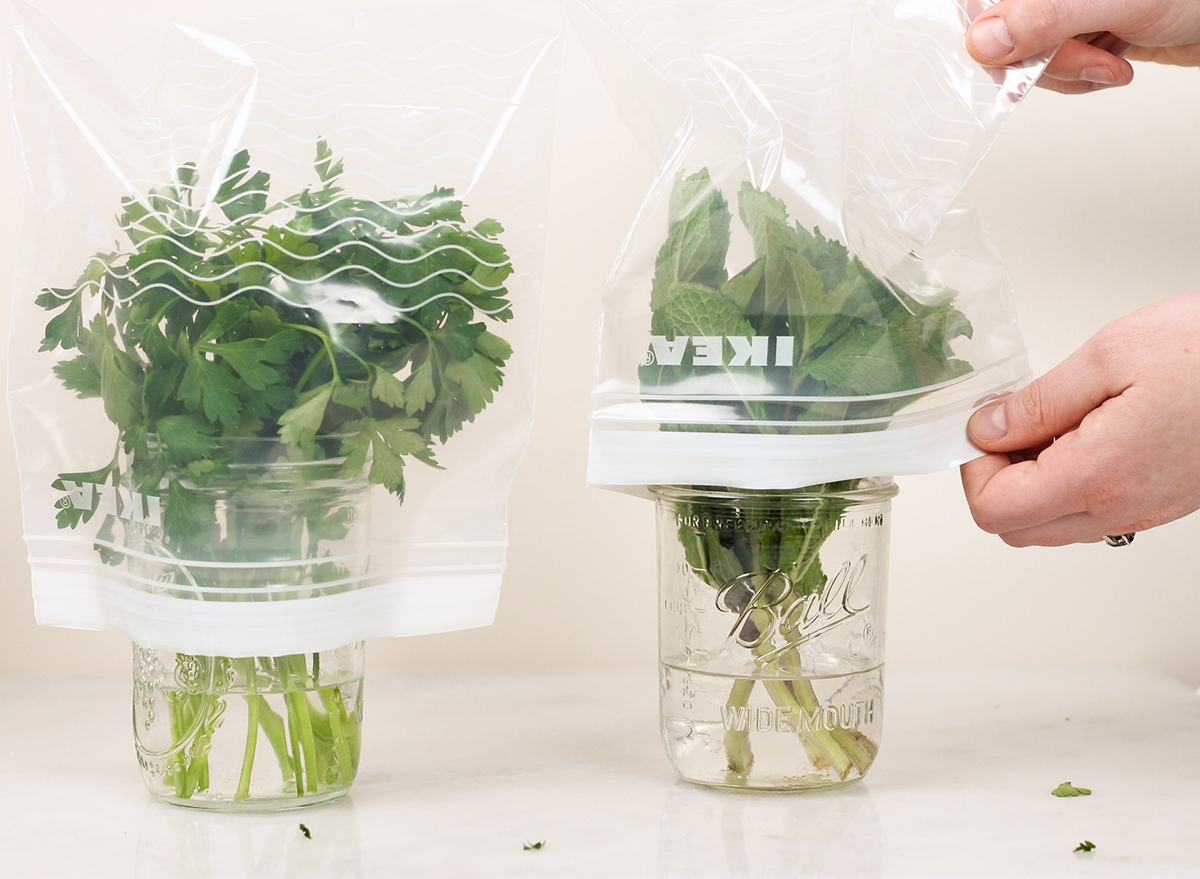
Store salad greens and fresh herbs in tightly-sealed bags filled with a small amount of air. If you leave your herbs in the package you bought them in, they'll have a greater chance of going bad before you get to use them.
And with chopped salad greens, store them in the fridge in a bowl lined with paper towels and cover with plastic wrap.
Celery

Weird, but true: Aluminum foil will keep celery fresh. Wrap celery in aluminum foil before storing it in the veggie bin of the fridge.
Pineapples

To store pineapples, cut the leafy top off and place the pineapple in the fridge upside down.
Mushrooms
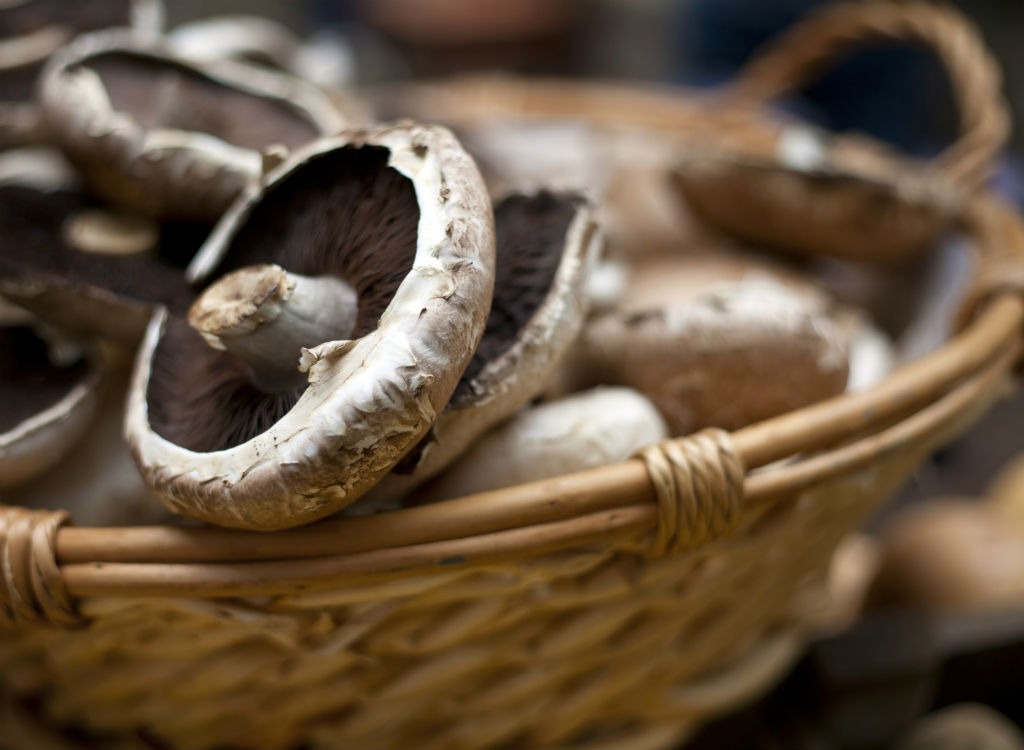
Store mushrooms in a brown paper bag in the fridge or another cool, dry area.
Berries
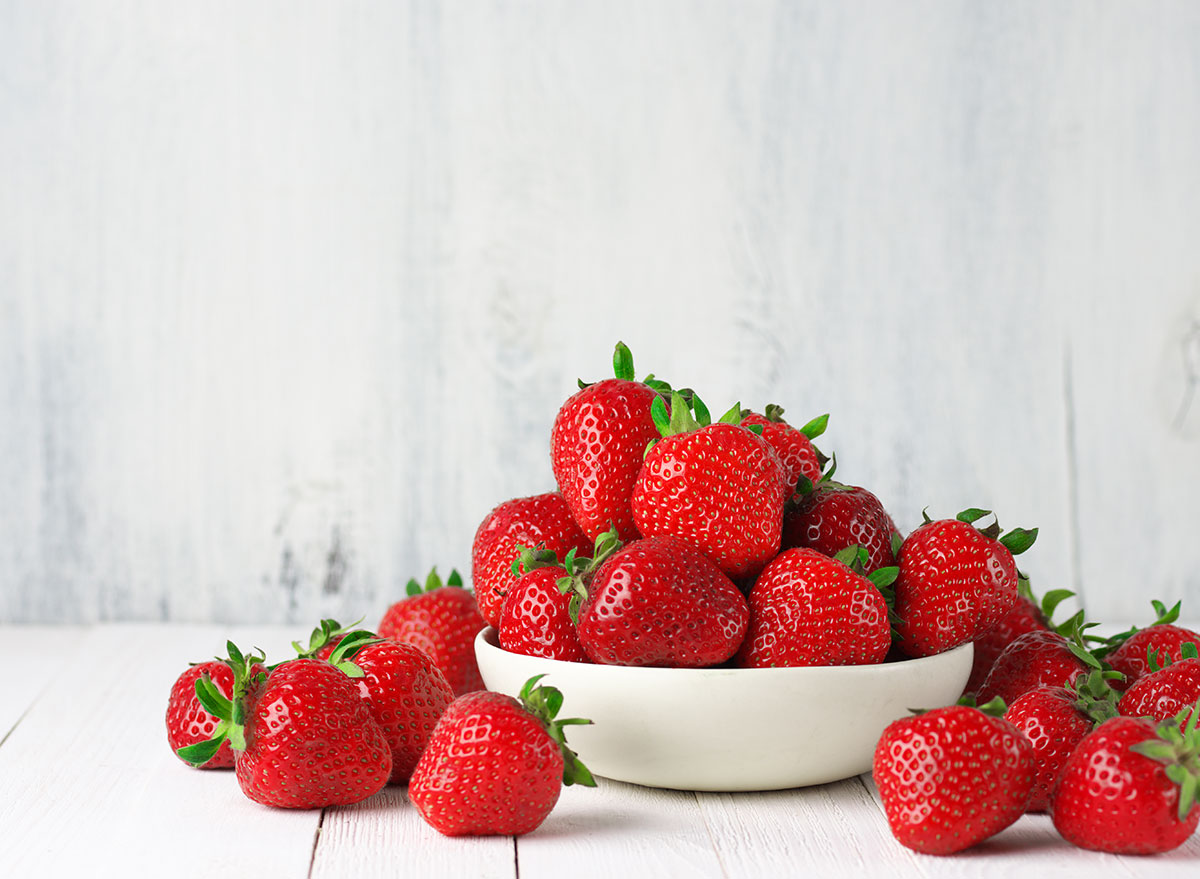
Moisture causes mold, so do not wash berries until you're ready to eat them. Keep them in the fridge in a container that leaves room for airflow so they don't get moldy.
Root vegetables, including ginger and turmeric

Store roots such as ginger and turmeric in the freezer. They'll actually fare better in the cold.
Tomatoes
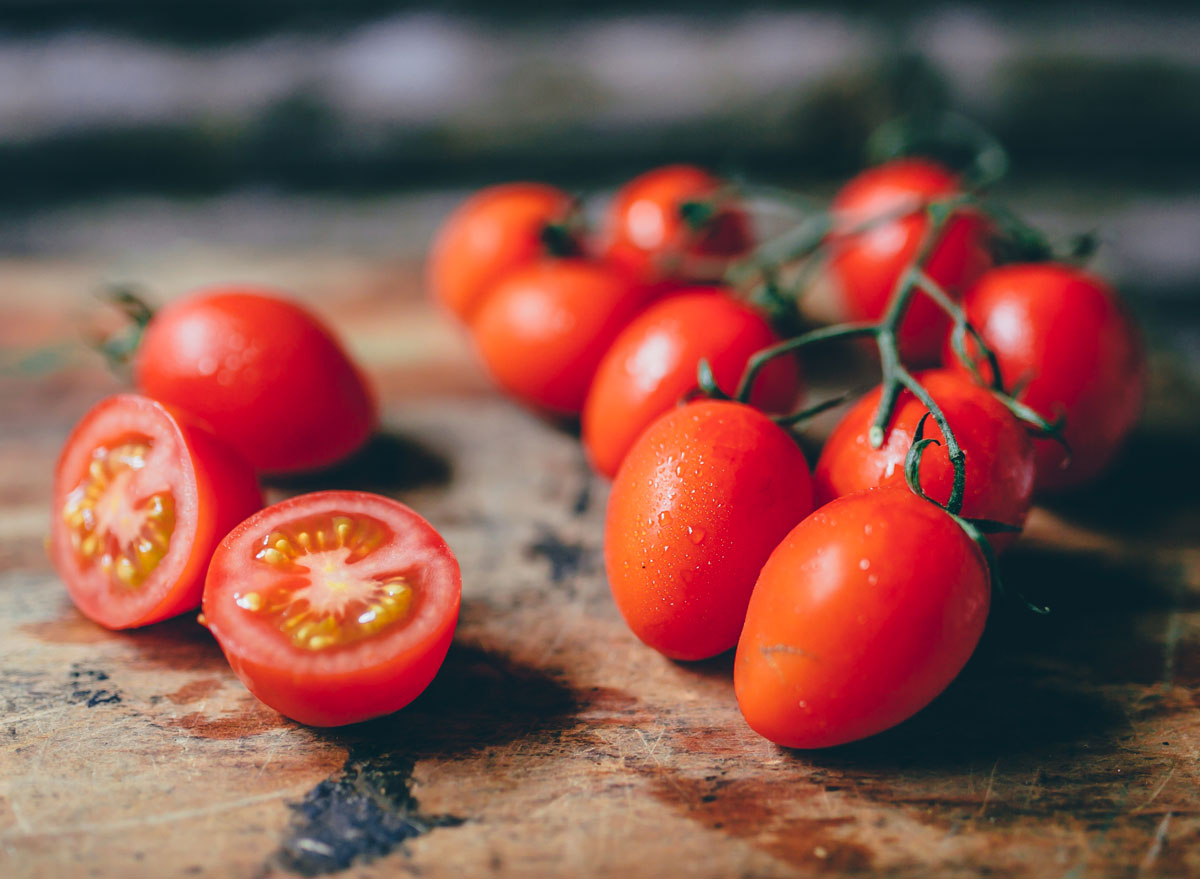
Keep tomatoes away from salad greens. They'll do best at room temperature, away from sunlight—and you're better off not storing them in plastic.